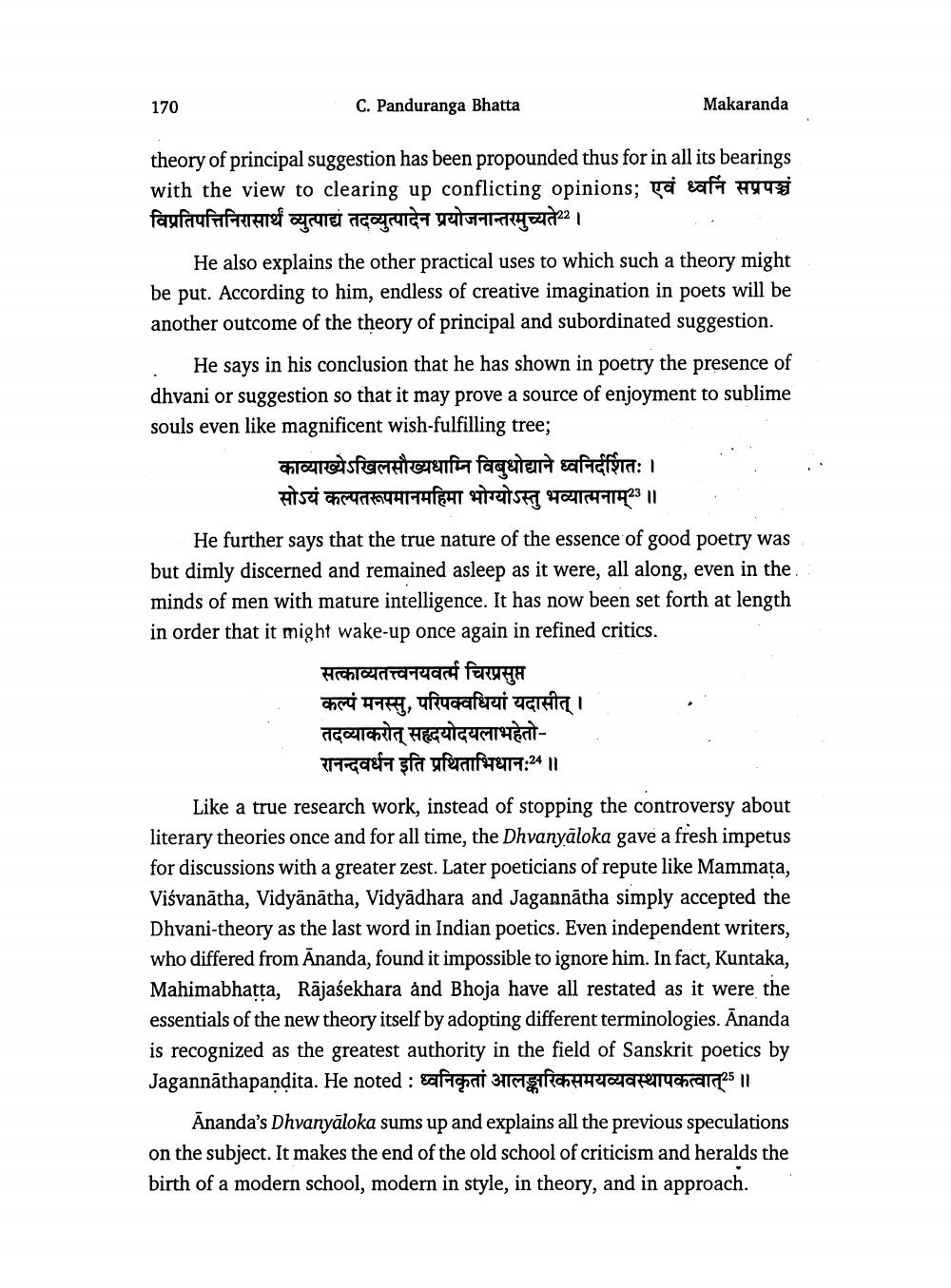________________
170
C. Panduranga Bhatta
Makaranda
theory of principal suggestion has been propounded thus for in all its bearings with the view to clearing up conflicting opinions; vai saf Hus विप्रतिपत्तिनिरासार्थं व्युत्पाद्यं तदव्युत्पादेन प्रयोजनान्तरमुच्यते ।
He also explains the other practical uses to which such a theory might be put. According to him, endless of creative imagination in poets will be another outcome of the theory of principal and subordinated suggestion.
He says in his conclusion that he has shown in poetry the presence of dhvani or suggestion so that it may prove a source of enjoyment to sublime souls even like magnificent wish-fulfilling tree;
काव्याख्येऽखिलसौख्यधाम्नि विबुधोद्याने ध्वनिर्दर्शितः।
सोऽयं कल्पतरूपमानमहिमा भोग्योऽस्तु भव्यात्मनाम् ॥ He further says that the true nature of the essence of good poetry was but dimly discerned and remained asleep as it were, all along, even in the minds of men with mature intelligence. It has now been set forth at length in order that it might wake-up once again in refined critics.
सत्काव्यतत्त्वनयवर्त्म चिरप्रसुप्त कल्पं मनस्सु, परिपक्वधियां यदासीत् । तदव्याकरोत् सहृदयोदयलाभहेतो
रानन्दवर्धन इति प्रथिताभिधान:24 ॥ Like a true research work, instead of stopping the controversy about literary theories once and for all time, the Dhvanyāloka gave a fresh impetus for discussions with a greater zest. Later poeticians of repute like Mammața, Viśvanātha, Vidyānātha, Vidyādhara and Jagannātha simply accepted the Dhvani-theory as the last word in Indian poetics. Even independent writers, who differed from Ananda, found it impossible to ignore him. In fact, Kuntaka, Mahimabhatta, Rājasekhara and Bhoja have all restated as it were the essentials of the new theory itself by adopting different terminologies. Ananda is recognized as the greatest authority in the field of Sanskrit poetics by Jagannathapandita. He noted : ध्वनिकृतां आलङ्कारिकसमयव्यवस्थापकत्वात25 ॥
Ananda's Dhvanyāloka sums up and explains all the previous speculations on the subject. It makes the end of the old school of criticism and heralds the birth of a modern school, modern in style, in theory, and in approach.




